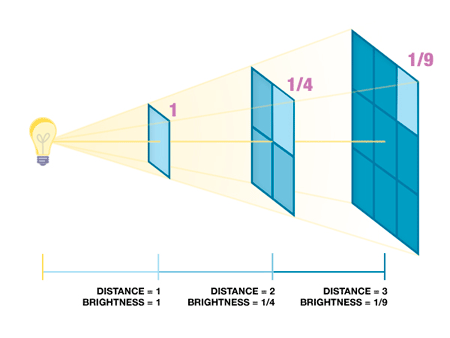Inverse Square Law

The common misconception is to think that moving a light twice as far from the subject will result in half the light and a one f-stop difference in illumination. This is incorrect.
It must be remembered that light is projected in a 2D pattern – up/down and right/left. If you consider a reflector that illuminates, say, a 10-foot circle at a 10-foot distance, the area illuminated is pi times radius squared or 11,310 square inches. If the distance is doubled to 20 feet, the projected pattern will be a 20-foot circle and the area of that circle will be 45,239 square inches – four times as great as the first example. Since the light must now illuminate four times the surface area, its intensity is one fourth.
Thus the square law propagation of light:
The intensity of light varies according to the square of the change in distance from light to illuminated surface.
So, if you increase the distance by two, the light intensity becomes one fourth – 2 f-stops, not 1f. If you move the light in to one half the distance, the intensity increases by 2 f-stops.
To affect a 1f gain in light intensity, you would move the light in by a factor of .707 (from 10 feet to 7 feet). Moving the light out by a factor of 1.414 (to 14 feet) will result in a loss of 1f.

